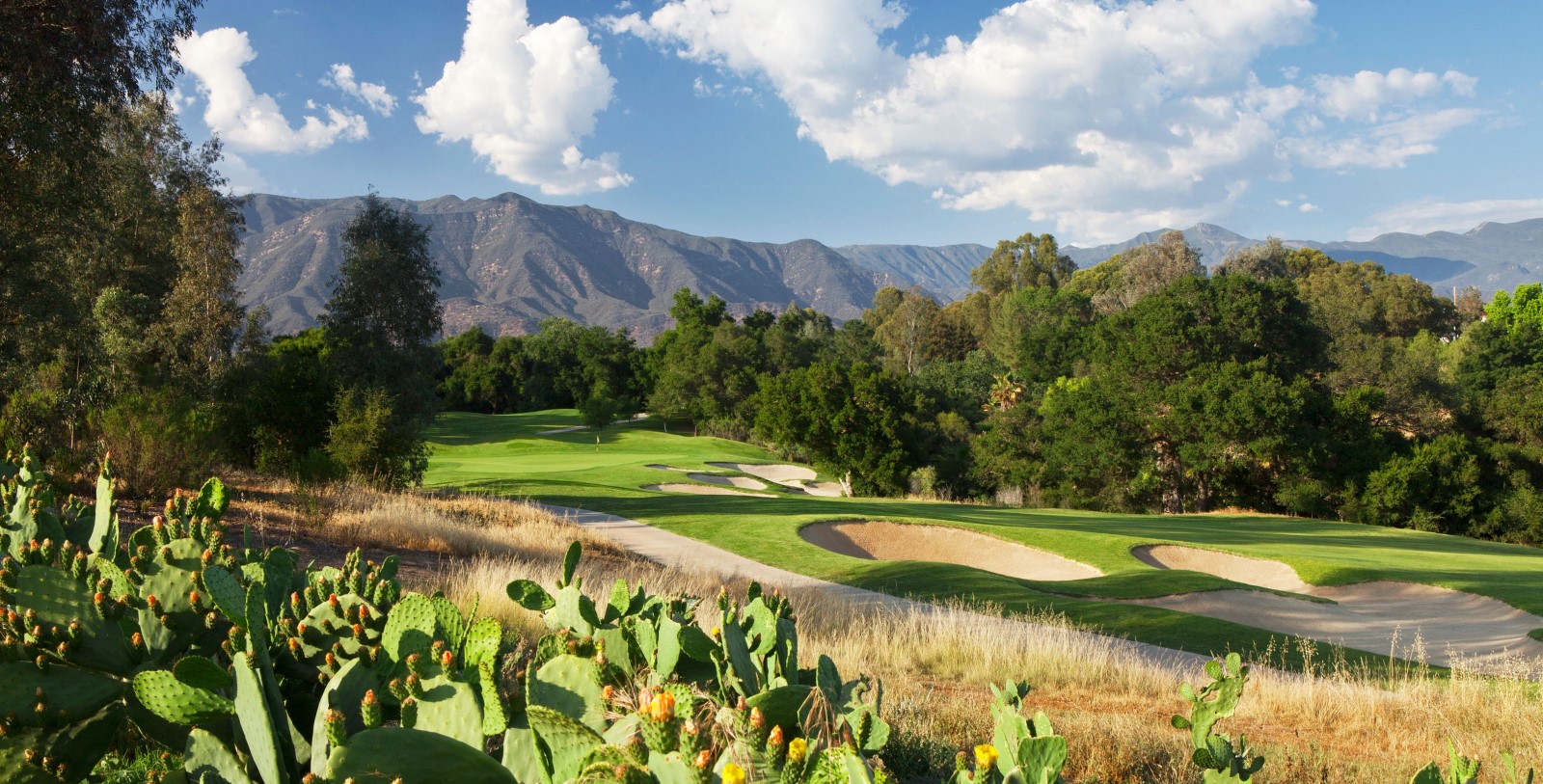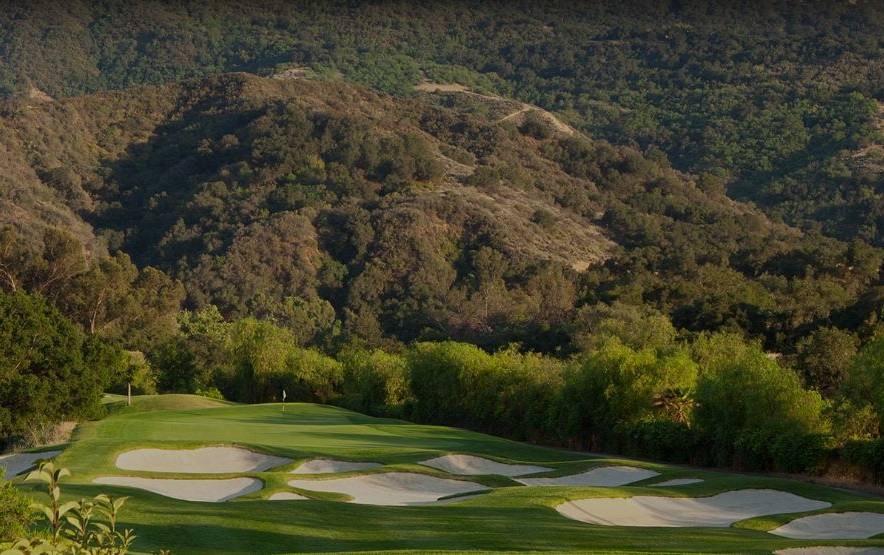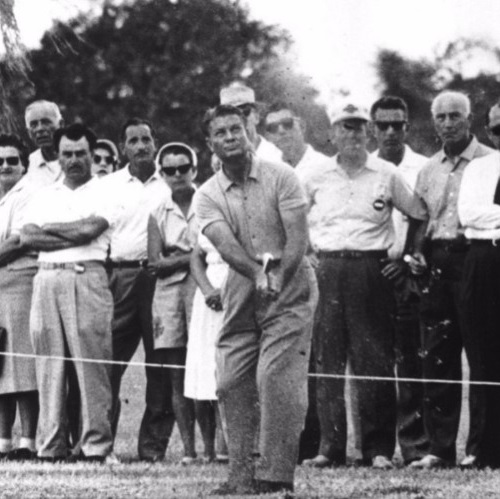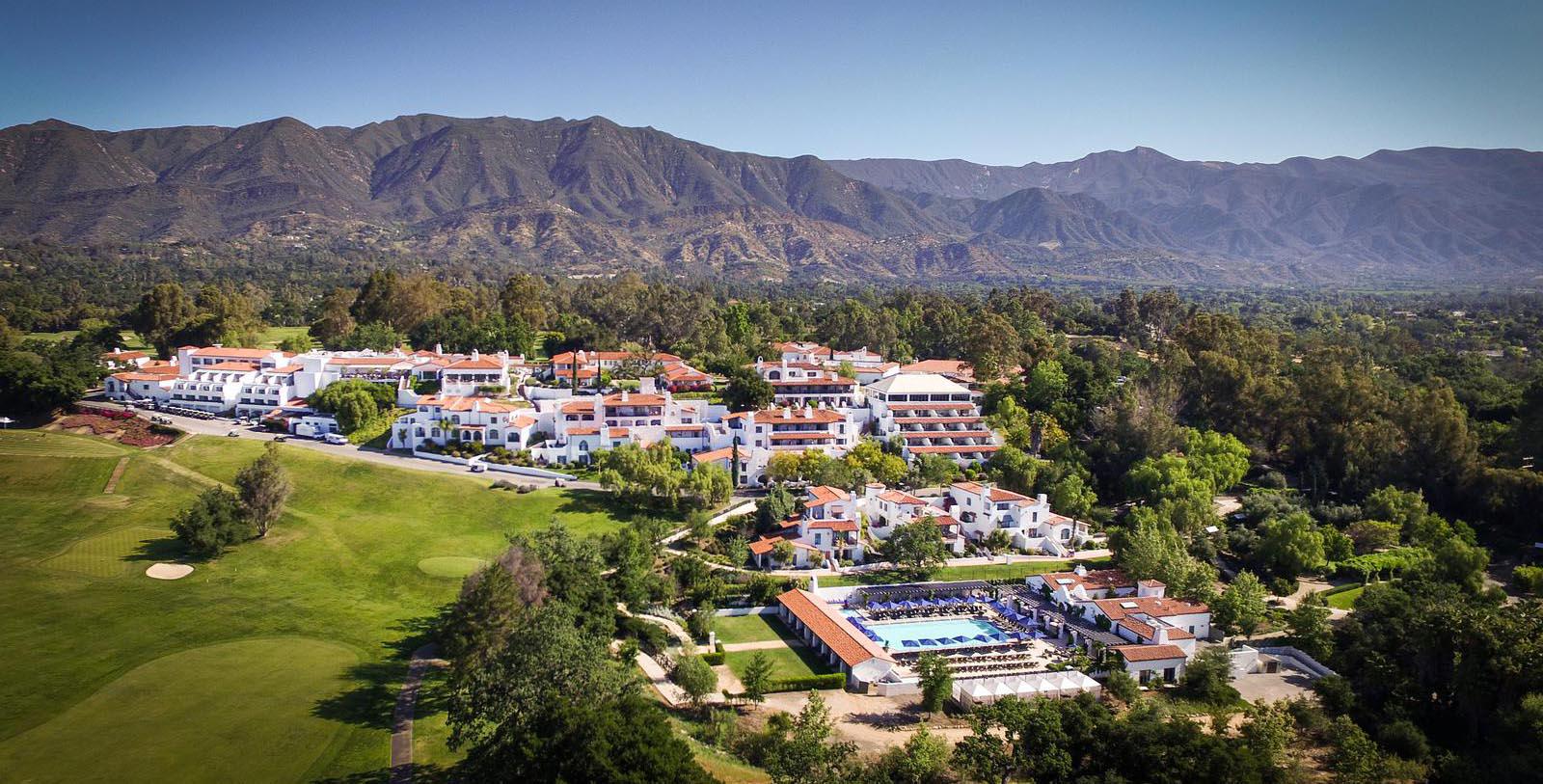Receive for Free - Discover & Explore eNewsletter monthly with advance notice of special offers, packages, and insider savings from 10% - 30% off Best Available Rates at selected hotels.
golf
Discover the beautiful Ojai Valley Country Club, which was first designed by George C. Thomas Jr. during the Roaring Twenties.
Golf Ojai: Ojai Valley Inn
Since 1923, golf has been an experience enjoyed by players of all levels on Ojai Valley Inn’s classic George Thomas-designed course, lauded as one of “the finest courses in Southern California.”
WATCH NOWThe Ojai Country Club at the Ojai Valley Inn provides guests with the opportunity to play golf on an award-winning, championship-caliber golf course. This amazing par-70, 18-hole course navigates the local countryside beautifully and offers spectacular views of the nearby Topa Topa Mountain range. Its origins harken back to the Roaring Twenties, when glass industrialist Edward Drummond Libbey first began constructing a brilliant country club at the site. The country club was part of Libbey’s decades-long effort to improve the town of Ojai’s reputation as a prominent resort community. Libbey gave landscape architect George C. Thomas Jr. free reign to design the course in whatever way he liked, instructing: “Go ahead and build me the finest course that can be built…and use whatever land you wish. Give me the best. Money will be no object.” Upon its completion in 1923, many hailed the fairways as some of the most beautiful in the state. Some went as far as to hail the course as an engineering marvel, with the Los Angeles Times even reporting that its geography was “designed to look as if it had been there forever.”
Within a matter of years, the new Ojai Valley Country Club emerged as one of the greatest golf courses in Southern California. The golf course quickly attracted countless golfers from across the United States, which gave it a national fame that few other facilities could match at the time. Both the Ojai Valley Inn and the Ojai Valley Country Club were forced to close following the War Department’s requisitioning of the area during World War II. Early on, the club grounds were used as a U.S. Army camp, with many barracks erected on several of the fairways. The U.S. Navy then assumed control over the Ojai Valley Country Club in 1944, which became overflow housing for the Port Hueneme Naval Base. (The clubhouse and inn were specifically utilized as both officers’ quarters for Navy officers and Seabee recruits.) Legendary Hollywood stars Bing Crosby and Bob Hope even hosted a fundraising ceremony for the Navy Relief Warfare Fund at the Ojai Valley Country Club, too. But as the war ended, the War Department finally allowed the facility to reopen as a private business.
In 1947, new owners expanded the length of the golf course to measure a total of 6,800 feet and constructed an imposing reservoir to serve as a water hazard. Some of the biggest names in the country soon began to visit the clubhouse (and resort) afterward, including Clark Gable, Judy Garland, and future U.S. President Ronald Reagan. Golfing itself became so ingrained in the resort’s identity that it became a cherished pastime among the guests. In fact, the club soon employed renowned golfers like Jimmy Demaret and Doug Sanders to ensure that the club’s operations remained at an elite level. To maintain its historical character, the resort also commissioned additional renovations over the years. In fact, golf course designer Jay Morrish oversaw a major restoration in 1988, which was then followed by another rehabilitation in 1999. The construction projects have since preserved the rich legacy of the Ojai Valley Country Club, which continues to be among the best places to experience a round of golf in California. Indeed, this renowned historic golf course has hosted seven Senior PGA Tour events in recent years. Many renowned professional golfers have also visited, including Arnold Palmer and Gary Player.
-
About the Location +
The history of Ojai harkens back centuries, with the native Chumash residing in the area thousands of years ago. In fact, the word “Ojai” is derived from the Chumash word “awha’y,” which means “moon.” The area itself was merely an outpost of their sprawling society that populated the California coastline from Morro Bay to Malibu Creek. The Chumash even established thriving villages on the charming Channel Islands. Eventually, in the late 18th century, Spanish Franciscan priests began creating missions throughout the region. Those isolated locations were all that existed of European society for decades, until Mexico achieved its independence from Spain in 1821. The new Mexican government then ordered all the mission complexes secularized, with the land divided among political allies. Those new estates were owned by a class of people soon known as “rancheros,” who wielded significant influence over the Mexican frontier. In 1837, a businessman from Santa Barbara named Fernando Tico received one such land grant, which constituted the lower and upper sections of the Ojai Valley. Called the “Rancho Ojai” grant, it specifically covered a land mass of nearly 18,000 acres! Tico subsequently operated a cattle ranch in the upper valley, while his family lived in an adobe down in the lower portion. But their time at the estate proved to be short-lived, as they wound up selling the site to new owners in 1853.
The Rancho Ojai then exchanged hands several times until Thomas A. Scott acquired it nearly ten years later. Scott was a Pennsylvania oil and railroad baron, who was attracted to the Ojai Valley due to rumors about its vast subterranean oil reserves. In 1866, Scott and his nephew, Thomas Bard, raised a steam-powered drilling rig on the northern face of Sulphur Mountain. Known as “Ojai No. 6,” Scott and Bard spent the next several months attempting to extract crude oil from the area. Their lives changed drastically when on May 29, 1867, the rig struck an oil pocket at a depth of 550 feet. The reservoir that Ojai No. 6 hit was immensely large, eventually producing 10 to 20 barrels a day. Around the same time, Scott’s neighbor, Josiah Stanford—the older brother of Leland Stanford, founder of Stanford University—created his own oil rig on the southside of Sulphur Mountain. It, too, found oil, and became just as productive as Scott’s Ojai No. 6. But this prosperity did not last long, for the country experienced a decline in oil prices toward the end of the decade. Making matters worse was the rise of other oil fields across the United States in places like Texas and New Mexico. As such, Scott closed Ojai No. 6, while Bard began selling surface rights all over the Rancho Ojai. (When the local oil economy finally recovered in the 1890s, Bard would return to Sulphur Mountain to construct many more new rigs.)
While the rapid oil boom temporarily cooled, the core of the City of Ojai started to come into existence. In 1874, a businessman from San Buenaventura named R.G. Surdam laid out a small street grid in the lower valley near the Rancho Ojai. He named the little community “Nordhoff” after the author Charles Nordhoff. Surdam had chosen Nordhoff as the town’s namesake, as the latter had written a popular book entitled, California for Health, Pleasure and Residence. As such, Surdam hoped to affiliate his new town with Nordhoff’s work, crafting its identity as a preeminent vacation and health retreat. (Even though Nordhoff never mentioned Ojai Valley in the first edition of his book, he included it in later versions upon learning of the town.) The marketing strategy worked brilliantly. At first, Surdam only talked about the climate and Nordhoff’s book—but in the 1880s, he also began to address the area’s mineral springs. Hundreds of individuals began flocking to the area, arriving predominately along the Ventura and Ojai Valley Railroad. By the end of the century, both the town of Nordhoff and the surrounding Ojai Valley had developed strong reputations as places of healing. People affected by respiratory diseases found the region particularly attractive, settling along the mountains that lined the valley’s borders.
In the early 1900s, Nordhoff was a vibrant resort community that was especially popular among wealthy families from the East Coast and Midwest. The upscale Foothills Hotel catered to many of those affluent people. Some of those visitors even made their stay permanent, constructing grand manors in the undeveloped land surrounding the town. Among the individuals who decided to live in Nordhoff year-round was Edward Drummond Libbey and his wife, Florence. First arriving in 1907 from Ohio, the Libbeys quickly fell in love with the valley. Edward Drummond Libbey proceeded to buy land near the Foothills Hotel two years later, creating a Craftsman-style home that was designed by Myron Hunt and Elmer Grey. A follower of the City Beautiful movement, Libbey started considering new ways to improve Nordhoff’s landscape. He specifically hired Frank Mead and Richard Requa to create a Spanish Colonial-themed town center. Among the most notable features involved a Mission-style arcade and a bell tower that mimicked the famous Havana Cathedral in Cuba. Once the final phase of the project concluded in 1917, the town’s name was officially changed to “Ojai.” To thank Libbey for all that he had done, the townspeople proposed holding a celebration in Civic Center Park—now known as Libbey Park—called “Libbey Day.” Always modest, Libbey instead implored them to name it “Ojai Day.” The Town of Ojai continued to celebrate “Libbey Day” every year until 1928. Nevertheless, the holiday was revived by a local schoolteacher named Craig Walker during the 1990s. The event has been a cherished local festival ever since.
-
About the Architect +
George C. Thomas Jr.: A native of Philadelphia, George C. Thomas Jr. was the golf course architect responsible for crafting the iconic layout of the renowned Ojai Valley Country Club. Despite the prominence his name evokes today, Thomas did not start out as a golf course architect. Indeed, he had actually worked as an investment banker at his father’s firm—Drexel & Company—as a young man. Furthermore, Thomas seemed to have initially demonstrated more passion toward cultivating rose gardens—a hobby that remained with him throughout his entire life. He was even recognized as a national authority on roses during the early 20th century, writing two well-received books about the subject. Nevertheless, Thomas began pursuing golf course architecture in 1904, during which time he crafted a course on his family’s estate, Bloomfield Farm. Even though the course was somewhat rough in appearance, it nonetheless appealed to a group of amateur golfers. They subsequently bought the course from Thomas and converted it into the Whitemarsh Valley Country Club some four years later. Word soon spread of Thomas’ natural talent toward golf course architecture, which quickly netted him the opportunity to design a new golf course for the Spring Lake Golf & Country Club. Working alongside celebrated professional golfer George Duncan, Thomas proceeded to develop a magnificent, 6,000-yard course that quickly earned a reputation for its challenging, yet beautiful format.
His designs with the Spring Lake Golf & Country Club soon earned him the respect of many other golf course architects, including A.W. Tillinghast, Hugh Wilson, and Donald Ross. Indeed, Ross himself had exchanged design ideas with Thomas amid the former’s work on the Sunnybrook Golf Club. All the men found common ground as members of the emerging “Philadelphia School of Golf Course Design,” a philosophy that encouraged intricate designs to reward high-risk styles of play. After taking some time off to serve in the Army Air Service during World War I, Thomas decided to relocate his operations to California in 1919. (Many of his colleagues referred to him as “Captain” upon his return, as Thomas had reached that rank while serving in the war.) Two years after arriving on the West Coast, Herbert Fowler appointed him to assist in the redesign of the fairways at the Los Angeles Country Club. Thomas subsequently designed several more courses over the following decade via a fruitful partnership with the acclaimed William P. Bell. Together, the two created celebrated courses like the Bel-Air Country Club, the Red Hill Country Club, and the Ojai Valley Country Club. But Thomas unfortunately died rather abruptly from a heart attack in 1932. Nevertheless, his unique influence on such courses as the Ojai Valley Country Club has managed to endure for many generations thereafter.
-
Famous Historic Golfers +
Arnold Palmer, winner of seven major golf championships that include the PGA Championship and the Masters Tournament.
Gary Player, winner of seven major golf championships that include the PGA Championship and the Masters Tournament.
Jimmy Demaret, winner of seven major golf championships that include the PGA Championship and the Masters Tournament.
Doug Sanders, winner of 20 PGA Tour events and runner-up at four major championships.





































